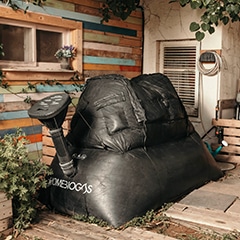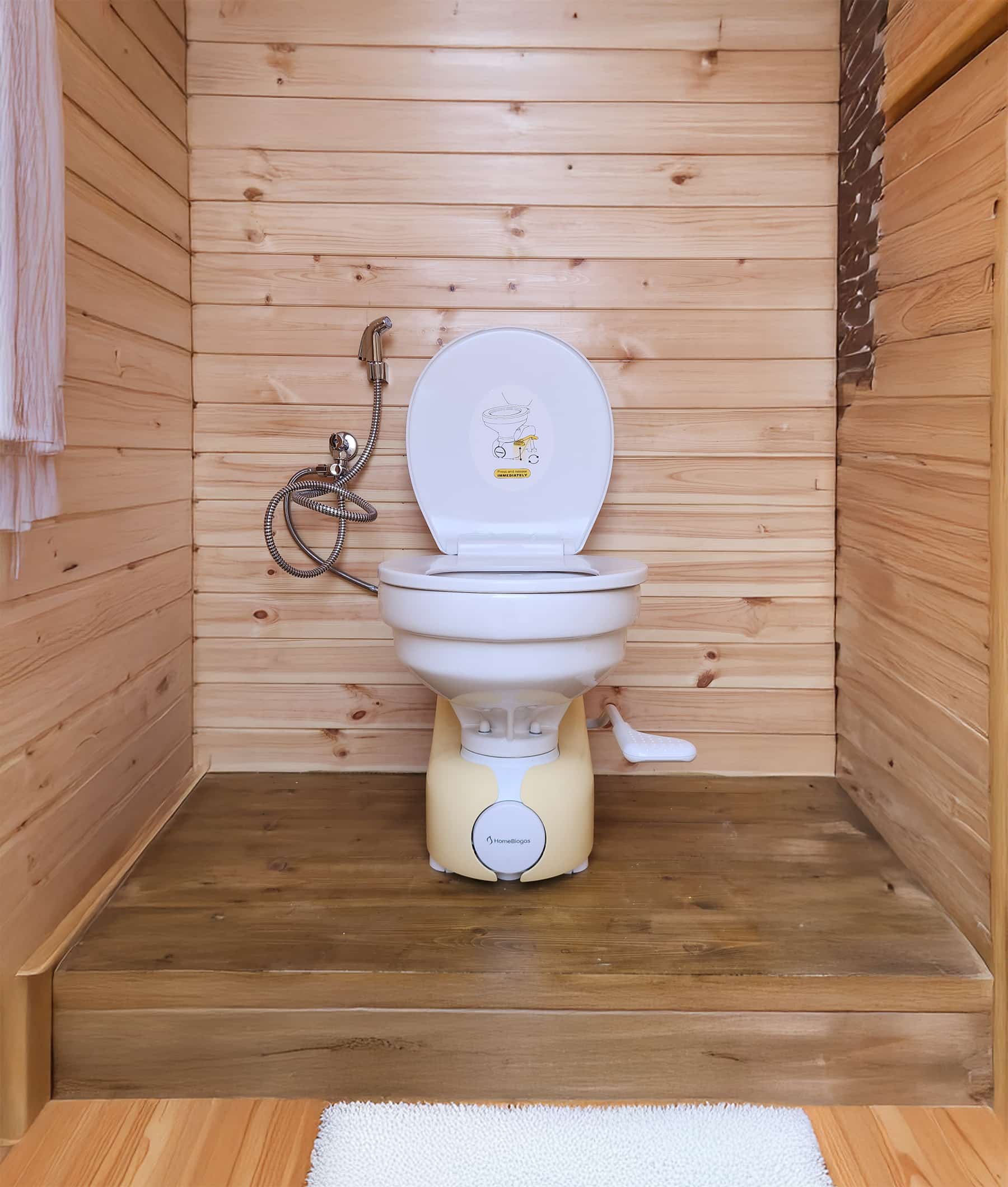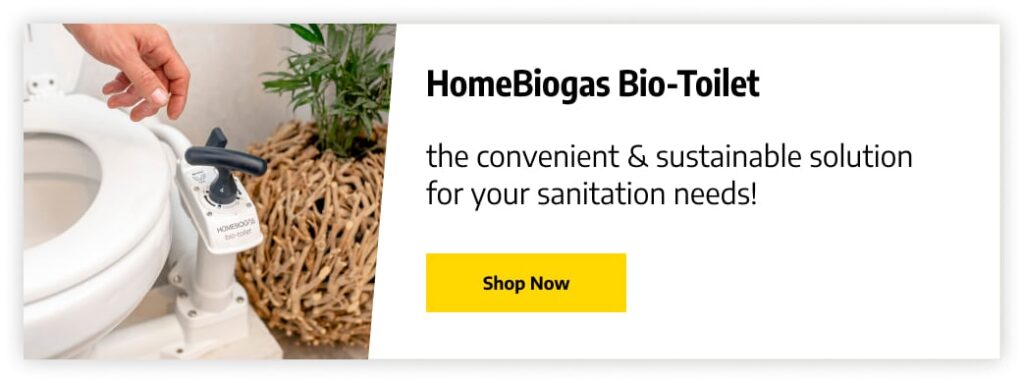
Nature’s Head Composting Toilet Overview
Nature’s Head Composting Toilet is a self-contained, waterless toilet for sustainable and environmentally friendly waste management. It’s an excellent choice for off-grid living, remote cabins, boats, RVs, and other contexts where traditional sewage isn’t feasible.
The system is odorless, easy to clean, and relatively simple to install. According to reviews, you’ll have an excellent experience with the product, provided you follow the manufacturer’s recommendations for maintenance and management.
Features and Design
All the features complement a well-thought-out design that prioritizes practicality and user comfort. Nature’s Head dimensions, including a width of 19 inches at its widest part, a height of 20 inches, and a depth of 17 3/4 inches front to rear, make it a space-efficient choice. The base measures 13 inches wide, while the toilet bowl widens to 16 1/4 inches, providing ample seating comfort.
The toilet’s “white granite” color adds a clean and contemporary look that can easily blend into different environments — it looks just like a traditional toilet.
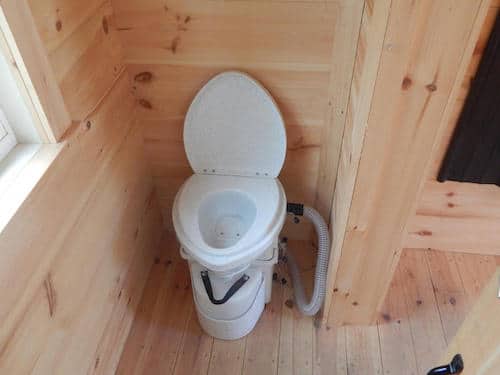
The stainless steel hardware balances durability and portability with a total weight of 28 pounds when empty. Unlike traditional seats, which might crack or break, this seat can withstand the demands of rough conditions.
The toilet’s fan draws a modest 1.7 amp hours in 24 hours, translating to a low household current usage.
How Does Nature’s Head Composting Toilet Work?
This composting toilet uses the following principles for eco-friendly human waste management:
- Separation
- Ventilation
- Natural decomposition
The toilet separates liquids from solid waste to reduce the risks of developing an unpleasant smell. A urine diverter pushes liquid waste away from the solids waste chamber, collecting it separately in a urine container. This feature prevents excess moisture in the composting chamber and helps maintain an optimal environment for decomposition.
Solid matter drops into a composting chamber beneath the seat. This solids container includes a ventilation system (vent fan) that facilitates airflow, creating an aerobic environment where beneficial bacteria thrive.
Nature’s Head recommends adding a composting material like coco coir or peat moss after each use. The coconut fiber aids in decomposition and manages moisture levels, creating a balance between carbon-rich and nitrogen-rich elements, essential for effective composting.
Nature’s Head Composting Toilet transforms waste into compost over time with proper maintenance. When the organic materials are fully composted, they become a nutrient-rich soil amendment that you can safely remove and use to nourish non-edible plants. Or you can add them to your compost bin for further composting.
Performance and Functionality
Its self-contained nature eliminates the need for complex plumbing setups, making it an ideal choice for various settings.

The toilet’s controls, including the fan operation and usage guidelines, are designed to be user-friendly. You can easily monitor the composting process and maintain optimal conditions for efficient waste breakdown.
Regular tasks like adding composting material, monitoring moisture levels, and periodic emptying of containers are straightforward and manageable.
Installation and Setup of Nature’s Head Composting Toilets
The Nature’s Head toilet securely attaches to the floor using two small L-brackets. A single ventilation hose must be routed outside, and a 12-volt power connection can power the small computer-type fan. The unit can also operate independently by directing the vent hose to a solar vent.
Complete installation instructions are easily accessible and provided with your toilet, ensuring a hassle-free process.
Unlike other toilets, there’s no need to purchase chemicals — peat moss or coconut coir are enough to maintain the chemical balance inside the composting compartment.
Emptying the toilet is relatively easy once you’ve learned how to use Nature’s Head toilet. You can access the liquid bottle and main tank without effort by raising the upper section using the latches and connectors. The toilet’s compact design allows easy emptying into a regular garbage bag while composting starts anew.
Pros & Cons of Nature’s Head Composting Toilet
Benefits:
- The toilet is self-contained and operates independently of traditional plumbing systems, making it suitable for off-grid settings.
- The waterless design eliminates the need for flushing, reducing water usage for responsible waste management.
- The toilet has a urine-diverting feature that separates liquid waste from solid waste for fast composting.
- It’s adaptable to various environments and locations, whether a home, remote cabin, tiny house, RV, workshop, or boat.
- The system’s design minimizes odors, ensuring a comfortable and pleasant user experience.
- Its compact size and lightweight nature make installing, transporting, and fitting into various spaces easy.
- It has a robust construction that enhances the toilet’s durability and resistance to corrosion without compromising functionality.
- The product’s manufacture in the United States reflects a commitment to quality and supporting local industries.
- Reviews highlight a great user experience overall.
Problems:
- As with all composting toilets, the system requires regular maintenance and monitoring.
- Using a composting toilet often has a learning curve, especially for individuals unfamiliar with this waste management system.
- The liquids container has a capacity of 2.2 gallons and will need frequent emptying.
- Improper usage or lack of maintenance can lead to unpleasant smells.
- The composting chamber and liquid waste container have limited capacities, which can be challenging in situations with high usage.
- The composting process is effective at 55 degrees Fahrenheit (12 degrees Celsius) and above. The composting activity becomes inactive and dormant when the temperature drops.
- Composting toilets can have a higher upfront cost compared to traditional toilets.
- Depending on your location and the type of property, your composting toilet might not comply with local regulations or building codes.
- Your guests might feel uncomfortable with the idea of using a composting toilet.
Nature’s Head Toilet — Environmental Impact
Water Conservation
A traditional flush toilet consumes large amounts of water with each use. In contrast, using a composting toilet can result in water savings exceeding 6600 gallons (24,984 liters) per individual annually.
Waste Diversion
Urine is rich in nitrogen, an essential nutrient for plants. When properly treated, the collected urine can be diluted and used as a natural fertilizer, reducing the need for synthetic fertilizers.
Soil Enrichment
Once fully composted, the material can be safely used as a nutrient-rich soil amendment. Compost supports sustainable agricultural practices that enhance soil health and structure.
Carbon Footprint Reduction
Traditional sewage systems require energy-intensive treatment processes that produce greenhouse gases. In contrast, Nature’s Head Toilet’s composting process is relatively low-energy and releases fewer emissions, supporting efforts to combat climate change.
Educational Value
Users can learn about composting principles, waste management, and sustainable practices, fostering a deeper understanding of environmental responsibility.
Meet HomeBiogas: An Alternative to Nature’s Head Composting Toilet
HomeBiogas tackles waste management differently for those seeking an alternative to Nature’s Head Composting Toilet. The HomeBiogas Bio-Toilet Kit is a cutting-edge solution that offers an alternative to conventional composting toilets. It’s a compelling approach that elevates self-sustainability and waste transformation.
The HomeBiogas system uses natural anaerobic digestion to break down human waste and other organic materials to obtain biogas suitable for cooking and heating while generating nutrient-rich liquid fertilizer for plant nourishment. This all-encompassing process resolves waste disposal concerns and provides tangible benefits for households and communities.
The system has a do-it-yourself installation, ensuring a hassle-free integration into your lifestyle. With the HomeBiogas2 biodigester, the kit’s capacity can serve up to three people and allows you to generate approximately one hour of cooking gas daily. In addition, you can significantly reduce your home’s carbon footprint by saving up to 6 tons of CO2 emissions and conserving up to 40,000 liters of water annually.
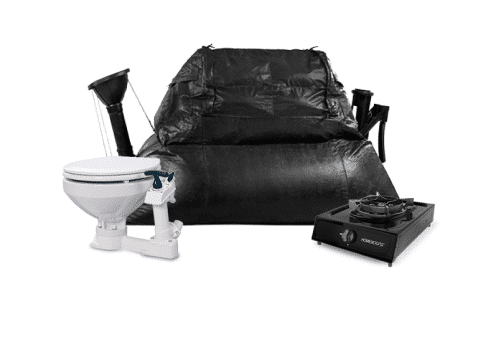
Adding a booster kit enables the system to operate effectively even in colder weather conditions so that you can generate liquid bio-fertilizer and cooking gas all year round.
Based on your requirements, you can enhance the system by selecting a larger biodigester suitable for up to six individuals. Alternatively, you can choose a double-bio-toilet configuration and a larger biodigester accommodating up to ten people.
All kit versions balance modern living and environmental responsibility with innovative design, remote functionality, and renewable energy output.
Final thoughts
Nature’s Head Composting Toilet is an effective waste management solution that champions water conservation and diminishes reliance on traditional sewage systems. It’s an excellent choice that empowers users to embrace environmentally friendly practices without sacrificing comfort.
However, it’s essential to address certain limitations. The efficiency of its composting process is contingent on ambient temperature, potentially limiting its functionality in colder climates. Additionally, the initial investment cost and ongoing maintenance, including the need for composting material, might be factors for prospective users to weigh.
